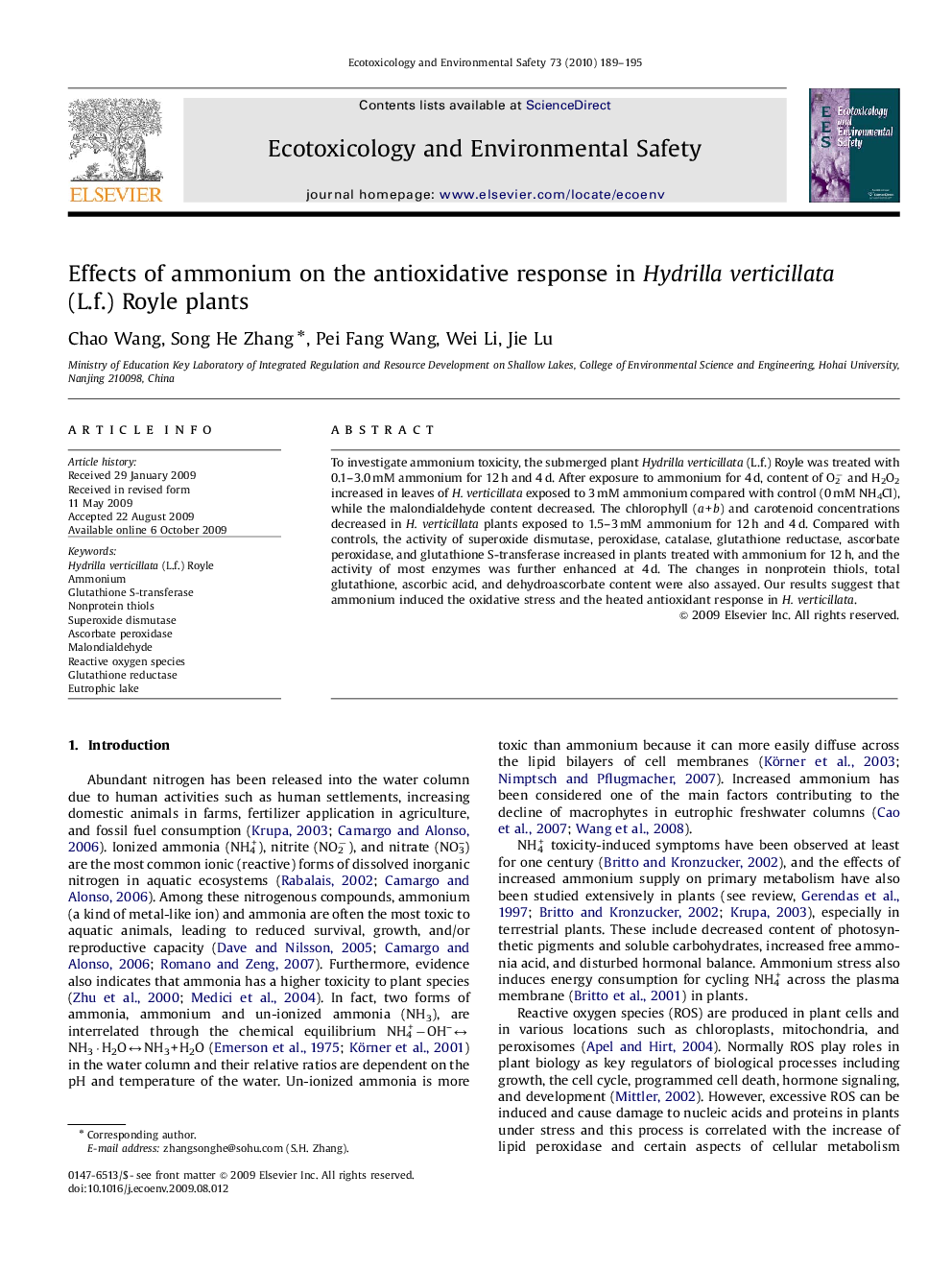| Article ID | Journal | Published Year | Pages | File Type |
|---|---|---|---|---|
| 4421844 | Ecotoxicology and Environmental Safety | 2010 | 7 Pages |
To investigate ammonium toxicity, the submerged plant Hydrilla verticillata (L.f.) Royle was treated with 0.1–3.0 mM ammonium for 12 h and 4 d. After exposure to ammonium for 4 d, content of O2− and H2O2 increased in leaves of H. verticillata exposed to 3 mM ammonium compared with control (0 mM NH4Cl), while the malondialdehyde content decreased. The chlorophyll (a+b) and carotenoid concentrations decreased in H. verticillata plants exposed to 1.5–3 mM ammonium for 12 h and 4 d. Compared with controls, the activity of superoxide dismutase, peroxidase, catalase, glutathione reductase, ascorbate peroxidase, and glutathione S-transferase increased in plants treated with ammonium for 12 h, and the activity of most enzymes was further enhanced at 4 d. The changes in nonprotein thiols, total glutathione, ascorbic acid, and dehydroascorbate content were also assayed. Our results suggest that ammonium induced the oxidative stress and the heated antioxidant response in H. verticillata.
